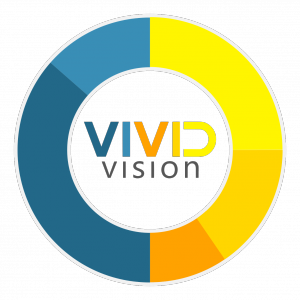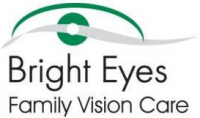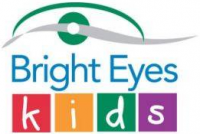 To continue our series on Virtual Reality. I was lucky enough to interview James Blaha, co-founder of Vivid Vision. I have known James for couple of years and have been fascinated by both his story and the product of his efforts. I am excited to share his thoughts with you.
To continue our series on Virtual Reality. I was lucky enough to interview James Blaha, co-founder of Vivid Vision. I have known James for couple of years and have been fascinated by both his story and the product of his efforts. I am excited to share his thoughts with you.
Dr. Nate: Can you tell me about your original visual problem and the treatment options you were given?
James: I was diagnosed with amblyopia and strabismus before I could speak using the fly stereo test. I would rub my hand flat on the paper instead of trying to grab the fly. My parents had me patch, but I would constantly take it off and peek out of the side when they weren't paying attention. I did vision therapy exercises at home and sometimes in a clinic. When I was 9 years old they told me that I was too old for my weak eye to improve, and we should give up with the patching and exercises.
Unfortunately, many patients hear that. What aspects of your treatment did you want to improve with Vivid Vision treatment treatment?
I want to make it fun for younger kids. I absolutely hated patching and VT exercises growing up, and I think that contributed to the treatment not working for me. We also want to demonstrate that you can improve vision in adults with our system as well and push the state of the art forward for adult binocular vision treatments. There are a huge number of untreated adults with amblyopia and strabismus and we want to get the message out that there is something they can do to improve their vision.
Did you have grand vision of changing the way doctors practice or did it just evolve over time?
It evolved over time. At first I was just planning on making something to explore how my own vision works. When it worked better than I expected, that vision expanded to making a game anyone could play at home. Once I dove deeper into binocular vision and spoke to several optometrists, ophthalmologists, and vision scientists it became apparent that it is a deeply complex issue where everyone has a unique situation. This lead us to want to develop tools for optometrists to use rather than release something that didn't involve eye doctors at all.
How does it feel to read and hear breakthrough stories of Vivid Vision patients like Betsy who describes her new 3D vision as a "superpower"?
It feels amazing. One of the things I've learned from speaking with hundreds of people with amblyopia and strabismus is that even though I had a tough time growing up with it, most people had a much more difficult time than I did. The reason we are building Vivid Vision is to improve people's lives, to increase the reliability and efficiency of treatment, and to reduce the cost of treatment so that all of the millions of adults and children with lazy eye can get access to it. For many that means being able to pursue careers and hobbies that were previously out of their reach.
I expected Vivid Vision to be a great tool for treating amblyopia. I am surprised at how effective it appears to be for strabismus. What is it about Vivid Vision that you think makes it such an effective treatment option?
I think there are three major factors that contribute to the effectiveness of Vivid Vision over previous treatments. The first is that we have an awesome team of optometrists, ophthalmologists, and vision scientists advising us and providing input on the system. Our Chief Optometrist Tuan Tran worked directly with patients and vision therapists treating binocular vision issues, our Science Adviser Ben Backus runs a vision science lab at SUNY studying binocular vision, and Dr. Paul Harris at SCO has given us advice and feedback since nearly the very beginning of the company.
The second factor is our use of virtual reality hardware. Because the system is enclosed, it means that the viewing conditions are always exactly the same. With other 3D technologies external lightning makes it difficult to be sure you are delivering exactly the right visual stimulus. Another big issue is inter-ocular contrast, and VR headsets provide a higher inter-ocular contrast than other methods of delivering unique images to each eye. Lastly, we think that providing training environments that are more like real life will make it more likely that the visual skills patients are learning will transfer outside of the training environment and into the real world.
The third factor is that the games and activities are more fun and more realistic than previous treatments. Although the locations and games may be more exciting and different than the real world, we believe that the exercises should contain visual activities that closely resemble people's real life. Instead of choosing between relatively artificial targets on a screen, they could be choosing which basketball to catch at a park, for example. We want people to be practicing how to use their vision in ways they can directly apply to their life.
What has been the general feedback from doctors? Does this new technology make them uncomfortable?
Optometrists have been really positive about the technology. I think that most eye doctors realize that vision therapy could use more tools and that there is no reason these activities can't be engaging and fun. Some doctors have been hesitant to bring in VR technology, but I think that is normal for any new tech to have a warming up period where people get familiar with it.
Is there anything else you want to add?
We want to empower doctors to treat more patients more efficiently by building them a set of tools to measure, track, and treat binocular vision issues. We want to educate patients so that they know there is a treatment option for them and connect them to doctors. We think this is the only way the millions of untreated adults can get treatment for their binocular vision issues.
Thank you, James, for sharing your story.
Bright Eyes is proud to offer Vivid Vision to our patients who will benefit from it. For readers who are interested in Vivid Vision, read more here or call us at 813-792-0637. You can request appointments here.
See Well!


Leave a Reply